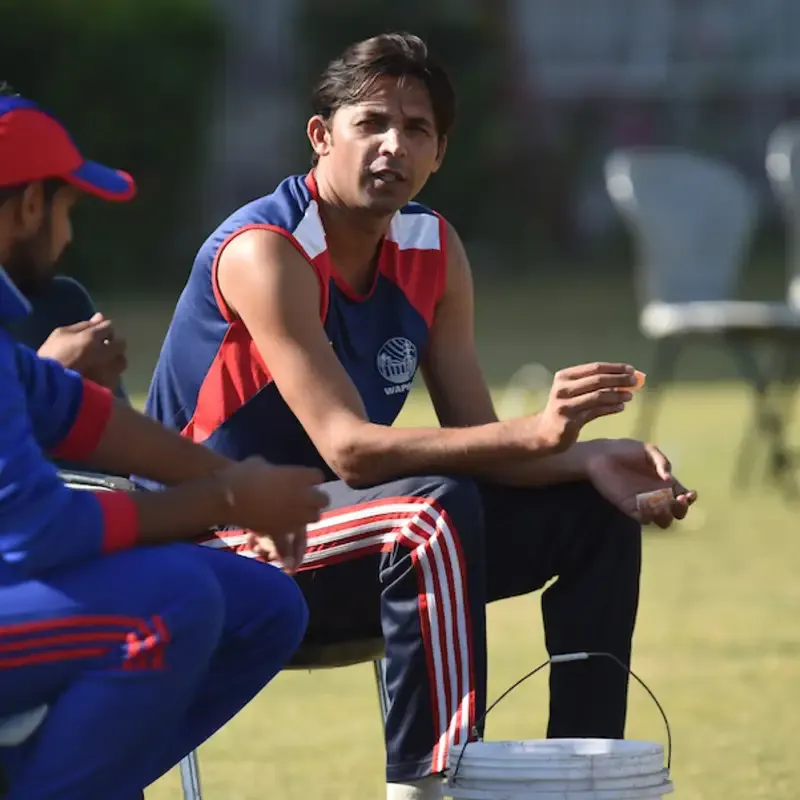
“
Mohammad Asif is a name that resonates deeply within the cricketing world. He is celebrated for his extraordinary talent and is equally notorious for the controversies that marked his career. However, his journey was marred by challenges, including a suspension for involvement in a spot-fixing scandal during the 2010 series against England. In this blog, we explore 20 curious facts about Mohammad Asif, shedding light on his remarkable cricketing abilities while delving into the controversies that often overshadowed his talent. 1
1
”
Mohammad Asif, born on 20 December 1982, is a former Pakistani cricketer who played for the national team from 2005 to 2010. A right-arm fast bowler, he took 106 wickets in 23 Tests and 138 wickets in 38 ODIs. 1
He gained prominence in the cricketing world for his ability to deliver the ball with precision and control like Wasim Akram, often causing havoc for opposing batters. 2
Asif's early career saw him achieving significant success, including pivotal performances in the 2006 Test series against the West Indies, where he took a remarkable 12 wickets. 3
In 2007, Asif faced his first major controversy when he was detained in the United Arab Emirates for possession of a banned substance, but he was later released without charges. 4

Asif's career peaked during the 2009 ICC World Twenty20, where he played a crucial role in Pakistan's victorious campaign, showcasing his skill in high-pressure situations.
However, Asif's career was marred by further controversy when he was implicated in a spot-fixing scandal during Pakistan's tour of England in 2010, along with teammates Salman Butt and Mohammad Amir. 5
During Pakistan’s 2010 tour of England, players deliberately bowled no-balls for payment, bringing disgrace to the nation and shocking the cricket world. Many questioned the motives behind their actions. 6
In February 2011, the International Cricket Council (ICC) handed Asif a seven-year ban from cricket, effectively sidelining him from the sport he loved. The scandal tarnished his reputation and raised broader concerns about corruption within cricket. 7
This effectively ended his career and left cricket fans worldwide heartbroken over his immense talent. Wasim Akram and Kevin Pietersen noted that his ban ironically spared batsmen from facing a player who could have become legendary. 8

On 19 August 2015, the ICC lifted Mohammad Asif's ban, allowing him to return to all formats of the game starting 2 September 2015. He made his comeback in October 2016, playing for Quaid-e-Azam Trophy.
After serving his ban, Asif returned to domestic cricket in 2016 and sought to rebuild his career. His comeback was met with mixed reactions, with some fans welcoming his return while others remained skeptical of his integrity. 9
Despite his controversies, Asif’s bowling skills remained undiminished, and he continued to perform impressively in domestic leagues, including the Pakistan Super League (PSL). 10
Asif struggled with injuries throughout his career, impacting his ability to maintain a consistent presence on the field. However, when fit, he demonstrated the talent that had once made him a standout bowler in international cricket. 11
Asif was born in Sheikhupura, Pakistan, and came from a humble background, which added to his inspirational story of rising through the ranks of cricket. 12
Throughout his career, he was known for his unique bowling action, characterized by a smooth run-up and a pronounced wrist position at delivery. This technique contributed to his ability to generate movement both in the air and off the pitch.
In addition to his bowling prowess, Asif also had moments of brilliance with the bat, occasionally contributing valuable runs in tight situations. His all-round capabilities made him a valuable asset for the Pakistan team during his prime. 13
Asif has often reflected on his mistakes, regretting the choices that led to his downfall. His openness about his past teaches aspiring cricketers about the importance of integrity in sports. 14
Post-retirement, he has been involved in coaching and mentoring young bowlers, hoping to share his experiences and help them navigate the challenges of professional cricket. His desire to give back to the sport reflects a mature perspective on his career. 15
Asif's journey underscores the complex relationship between talent and controversy, illustrating how even the most gifted athletes can face significant challenges. 16
Despite the controversies, Asif remains a significant figure in Pakistan cricket history, with fans often reminiscing about his magical performances. His legacy is one of extraordinary talent and cautionary tales about the importance of ethics in sports. 17


